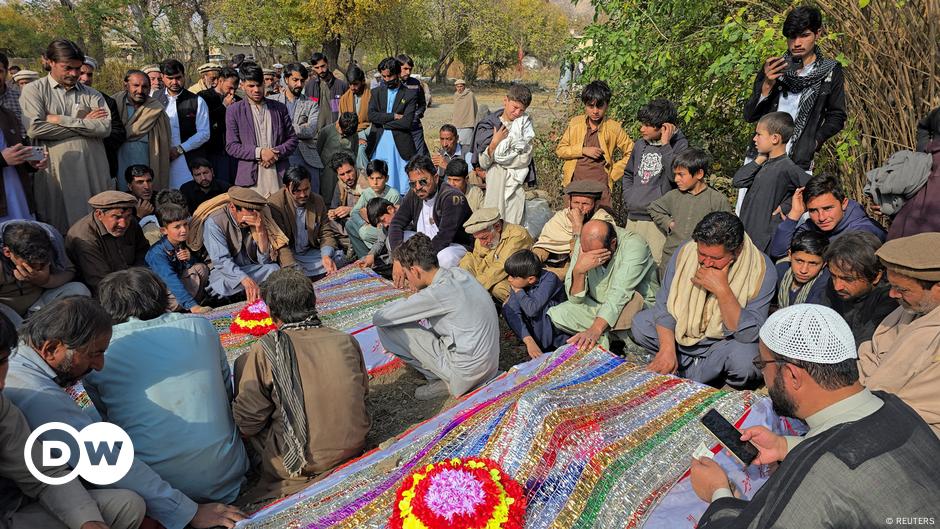Monster John Sweeney who murdered a US model and a second woman and is the inspiration for the new ITV drama 'Until I Kill You' should be probed over eight unsolved deaths in Belgium, a cold case expert has said.
Sweeney, 66, was on the run in Europe at the same time the headless remains of five women were found in and around the Belgian city of Mons in the 90s. The killer, dubbed 'The Butcher of Mons', has never been found.
But Kurt Wertelaers, who is the founder of a group investigating cold cases in Belgium called the Bureau van Meerbeeck, has now called for Sweeney to be probed over a total of eight killings, including the Butcher of Mons murders.
'I'm not saying all the unsolved cases are linked, but we at least should try to figure out or exclude if some of them are or are not. Killers don't stop at country borders,' Wertelaers told the Mirror.
Branded the 'Scalp Hunter', Sweeney murdered and dismembered two former girlfriends before dumping their remains in canals in Rotterdam and London.
Sweeney pursued US model Melissa Halstead, 33, across Europe before killing her in Amsterdam in 1990 and dumping her body in a canal. He also killed mother-of-three Paula Fields, 31, in 2001 and disposed of her dismembered body in a canal.
Sweeney went on to attack his ex Delia Balmer, now 71, with an axe outside her north London home in 1994.
Delia's ordeal has now been retold in ITV's new drama 'Until I Kill You', which is inspired by her 2017 memoir, Living with a Serial Killer, and is accompanied by a new documentary which details the true timeline of events.
Double killer John Sweeney (pictured) who murdered a US model and a second woman should be probed over eight unsolved deaths in Belgium, a cold case expert has said
Sweeney pursued US model Melissa Halstead (pictured), 33, across Europe before killing her in Amsterdam in 1990 and dumping her body in a canal
He also killed mother-of-three Paula Fields (pictured), 31, in 2001 and disposed of her dismembered body in a canal
Anna Maxwell Martin as Delia Balmer and Shaun Evans as John Sweeney in ITV's 'Until I Kill You'
While Sweeney was on the run, he lived under different aliases until he was finally caught in 2001 and brought to justice for the attempted murder of Delia - but not before killing and chopping up Paula Fields, who he lived with in Finsbury Park.
The body of mother-of-three Paula, 31, was cut into pieces and stuffed into six holdalls, which were found in a Camden canal in early 2001.
Former Met Det Chief Inspector Howard Groves, who led the team that investigated the Sweeney murders, said that 'quite a few women were found dead around Europe' in similar circumstances to Melissa and Paula while Sweeney was on the run.
He added: 'We know he travelled extensively there during that time. The question has always been, why did that stop when he was arrested and put in prison?'
Neither Melissa nor Paula's heads were ever found, which resembles the eight cold cases identified by Wertelaers, who said that Sweeney couldn't be excluded as a suspect for these murders due to the matching timeline of him living off-grid under at least four different aliases and his profile.
'To cut women into pieces like that shows a very strange psychology and is a sexual connotation to all of these murders,' Wertelears added.
Sweeney himself admitted to having several lovers as he travelled through Europe, which led investigators to believe there could be more victims than Melissa and Paula.
Sweeney's first victim Melissa Halstead met a recently divorced Sweeney in 1986 while she was working internationally as a model and photographer.
John Sweeney pictured with Melissa Halstead, who he brutally murdered in Amsterdam in 1990
The body of mother-of-three Paula Fields (undated picture of Paula while pregnant above), 31, was cut into pieces and stuffed into six holdalls, which were found in a Camden canal in early 2001
Sweeney went on to attack his ex Delia Balmer (pictured), now 71, with an axe outside her north London home in 1994
Delia's ordeal has now been retold in ITV's new drama 'Until I Kill You', which is inspired by her 2017 memoir, Living with a Serial Killer, and is accompanied by a new documentary which details the true timeline of events
About a year into their relationship, he had been charged at least once for domestic violence against her, and was subjected to a number of fines until the pair relocated to Austria.
He had tracked her down, stalked her, tied her up and attacked her with a hammer which cracked her skull.
After being released and ordered to leave Austria, the pair settled in Amsterdam, The Netherlands.
But her body was found floating in a canal in May 3, 1990, after he transported her body to Rotterdam. Her head was never found.
Detectives found deeply disturbing drawings by the murderer, including sketches that suggested how he butchered Melissa.
The American model's body was found dismembered in a Dutch canal. In one poem, Sweeney said she had been 'fed to the fishes and chopped into bits, Amsterdam was the pits'.
There were also self-portraits captioned 'seal hunter' in which the killer was shown as a devil with a bloody axe.
In one sketch, which Sweeney titled The Scalphunter, he drew women tied up. In another, he can be seen holding blades dripping with blood.
Metropolitan Police undated handout photo of a contact sheet of modelling photos for Melissa Halstead
A note seized from John Sweeney in 2001 referring to the death of Melissa Halstead before she was identified
John Sweeney's drawing of Melissa in the middle and a message saying RIP above her head, which he later covered up with Tippex
Another of Sweeney's poems read: 'On the run from the law, with my back to the wall. Watching the windows and the door. I'm not afraid to do or die. Maybe when this life is over I will get some sleep.'
Two years after Melissa was killed, a woman's hands and legs were found in a canal in Amsterdam. Her torso was later found in a suitcase thrown into another canal in the city, while more body parts were discovered in yet another stretch of water.
She was never identified, but Wertelaers believes that she might have been one of Sweeney's victims as she is the first of eight unsolved cases that fits his modus operandi.
A year later, in November 1993, the head and a leg of mother-of-two Liliane Sek, 37, were found near the Belgian town of Charleroi.
The dismembered body of another unidentified woman was found in July 1994 near a campsite in Retranchement, a Dutch seaside town.
In March 1997, remains were found in the southern Belgian city of Mons and investigators later discovered that the woman was the latest victim of a serial killer, later dubbed the Butcher of Mons.
In the following months, police discovered 38 body parts from the victims, which were identified as Carmelina Russo, 46, Martine Bohn, 43, Jacqueline Leclerq, 33, Nathalie Godart, 21 and Begonia Valencia, 38.
They disappeared between January 1996 and July 1997 after frequenting the slum neighbourhood around the train station in Mons.
In November 1993, the head and a leg of mother-of-two Liliane Sek, 37, were found near the Belgian town of Charleroi
A picture of Carmelina Russo,victim of the Butcher of Mons
A picture of Martine Bohn,victim of the Butcher of Mons
Discovery of bodies in bags on March, 1997 in Mons, Belgium
A picture of Jacqueline Leclercq,victim of the Butcher of Mons
A picture of Nathalie Godart,victim of the Butcher of Mons
A picture of Begonia Valencia (left),victim of the Butcher of Mons
Their body parts like arms, legs, hands, and torsos were discovered in 15 bin bags in Rue du Depot (dump), near the River Haine (hate), on the Chemin de l'Inquietude (the path of worry), the banks of the River Trouille (jitters) and in La Poudriere (powder-keg).
The names of these locations where body parts were found led investigators to believe they were being taunted by the killer.
Four of the women were mothers and all had recently fallen on hard times.
It was not until 2008 that Melissa's remains were identified using an advanced DNA test, paving the way for Sweeney to be charged with her murder.
Sweeney was given a whole life sentence at the Old Bailey in 2011 after being convicted of murdering Melissa and Paula.
ITV's new crime drama 'Until I Kill You' reveals how Sweeney butchered Melissa and Paula's bodies, removing their heads and hands so their corpses couldn't be identified.
He then tied up their body parts with rope and put them into bags filled with tiles and bricks to weigh them down in the water.
Melissa was thrown into a Rotterdam canal, while Paula's was put into London's Regent's Canal.
Discovery of bodies in bags on March, 1997 in Mons, Belgium
Delia Balmer was hacked to within an inch of her life by John Sweeney (pictured together), who she had dated for three years
Discovery of remains of human bodies found near Monts on April 12, 1997 in Monts, Belgium
Prosecutors during the killer's trial in 2011 said this was a deliberate attempt to prevent them from being identified and Sweeney being exposed as being responsible for the murders.
Delia, who survived her near fatal relationship with Sweeney and remains his sole known survivor, testified to him telling her about Melissa's murder, which helped prosecutors to build a case against him.
In 'Until I Kill You', Delia tells how Sweeney attempted to murder her, bludgeoning her with an axe.
In the drama, romance blossomed between Sweeney (played by Shaun Evans) and Delia (played by Anna Maxwell Martin) when he approached her at a bar in Camden, London, one evening and offered to buy her a drink. They bond over their shared love of travel.
While at first appearing attentive and caring, buying Delia bouquets of flowers and showing outward signs of affection, their relationship quickly deteriorated.
Sweeney, who took up residence in Delia's flat, became erratic and controlling towards Delia, criticising her appearance and where she spent her free time. When she finally gathered the strength to demand him to leave, she was met with his wrath.
Delia found herself increasingly tormented by Sweeney. She was hacked to within an inch of her life by the killer, who attacked her with a hammer and an axe.
Prior to the attempt on her life, Sweeney had held her captive and repeatedly raped her in a week-long ordeal, for which he was arrested but released on bail.
Delia (pictured as a young woman) met Sweeney in a pub in Camden, London, when she was working as an agency nurse
Sweeney, who took up residence in Delia's flat, became erratic and controlling towards Delia, criticising her appearance and where she spent her free time
When she finally gathered the strength to demand him to leave, she was met with his wrath. Delia found herself increasingly tormented by Sweeney
In 1994, in a terrifying ordeal spanning just a few days, Sweeney held Delia against her will, tied her to the bed and intimidated her with threats of disfiguring her tongue.
It is then that Sweeney admitted to murdering his ex-girlfriend Melissa Halstead, 33, in Rotterdam.
In her memoir, Delia recounted Sweeney's admission: 'We had a room in Amsterdam. I went in. There were two Germans there with her. I killed them all. I didn't know what to do with the bodies. I sat with them for three days. On the third day, I cut them up, and I put them in bags and I threw them in the canal.'
However, Delia's struggles did not end there, as she was then let down by the police and the legal system.
Her life was then put in danger once again when Sweeney was released on bail and made a second attempt on her life. He was finally caught in 2001 and sentenced to nine years in prison for his attack on Delia.
Delia, who collaborated on 'Until I Kill You', said she remains an 'angry person' as a result of her experiences.
In an interview before the show was released she said: 'My concern has always been to get the truth out by whatever means. I remain an angry person.
'Sweeney was let out on bail. The police gave me insufficient protection before his final assault. Later, I was forced to go to court to be further traumatised by the system.'
While at first appearing attentive and caring, buying Delia bouquets of flowers and showing outward signs of affection, their relationship quickly deteriorates (pictured is Anna Maxwell Martin as Delia Balmer and Shaun Evans as John Sweeney)
Anna Maxwell Martin as Delia Balmer in 'Until I Kill You' which dramatises the relationship between Delia and axe murderer John Sweeney
Delia, who collaborated on the ITV production of 'Until I Kill You', said she remains an 'angry person' as a result of her experiences
Interpol are seeking help identifying 22 women (12 pictured) who have been found since 1976
This handout photograph made available by Antwerp's public prosecutor's office on November 14, 2023, shows a portrait of Rita Roberts, a British woman found murdered 31 years ago in a river in Belgium
Rita Roberts' flower tattoo helped police identify her body. An appeal for information was in relation to 22 unsolved cold cases across Belgium, The Netherlands and Germany
Sweeney has previously been linked to some cases included in a 2023 Interpol appeal which is seeking to uncover the names of 22 women - each of whom are suspected murder victims from across Europe since 1976.
Three of those pictured by Operation Identify Me were women who were decapitated and had their remains left in canals in the Netherlands.
Interpol has confirmed that Sweeney is a person of interest in their investigation as he was a jobbing carpenter who was known to work on building sites in Germany, Holland and Belgium. His first known victim Melissa was also found in the Netherlands.
One of the cases Sweeney might be connected to is related to 'the woman with the flower tattoo', who was later identified as Rita Roberts.
Sweeney was known to be living in Belgium and the Netherlands at the same time as the Rita's body was found washed up at a water treatment plant in Antwerp.
Police say she met with an extremely violent death - similar to Sweeney's two victims Melissa, 33, and Paula, 31, who were about the same age as Cardiff-born Rita.
Sweeney was known to romance vulnerable women including prostitutes like Rita before attacking them with an axe.
Rita was finally identified through the rose tattoo on her arm 31 years after she was brutally murdered.
A spokesman for Rita's family told MailOnline after she was identified as one of the Operation Identify Me victims: 'It's a lot to take in but obviously we want her killer brought to justice.
'We hoped for some sort of closure after her body was identified after all these years but instead it has raised so many unanswered questions.'

 By Daily Mail (World News) | Created at 2024-11-29 12:25:33 | Updated at 2024-11-29 14:28:25
2 hours ago
By Daily Mail (World News) | Created at 2024-11-29 12:25:33 | Updated at 2024-11-29 14:28:25
2 hours ago








